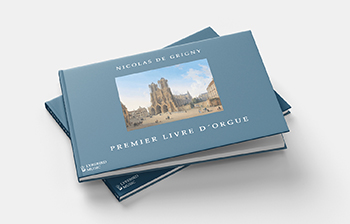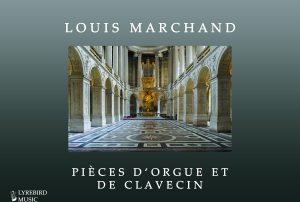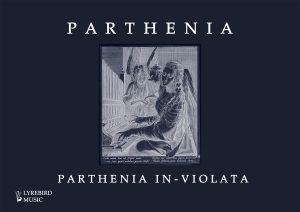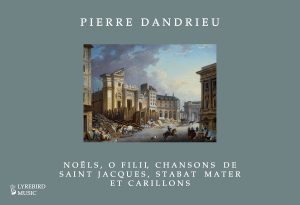LBMP–008: Nicolas de Grigny – Premier Livre d’orgue
€47.46 – €58.57 (+ VAT for EU customers)
ISMN 979-0-706670-02-7 (Hardback) | 979-0-706670-28-7 (Wire) 234 pages Edited by Jon Baxendale
- Organ Mass
- Five hymn settings
- Appropriate plainsong for mass and hymns taken from relevant sources
- Background notes
- Detailed notes on performance style and use in liturgical contexts
- Three available formats
- Colour hardback cover with a matt finish (choice on checkout)
- Wire-bound with soft colour cover (choice on checkout)
- Tablet (PDF – one download available for 5 days)
Prices vary according to your needs. Please first choose the format you require.
 The most erudite of Grand siècle organ composers, Nicolas de Grigny produced this single publication three years before his death in 1702. It contains an organ mass and five hymn settings for use at the more important feasts of the church year. The original engraving was problematic, with countless wrong notes, ornaments and pieces placed in the wrong order. Yet despite these shortcomings, it was thought important enough to be reprinted by Christoph Ballard in 1711 and to have been copied by J S Bach and J G Walther.
The most erudite of Grand siècle organ composers, Nicolas de Grigny produced this single publication three years before his death in 1702. It contains an organ mass and five hymn settings for use at the more important feasts of the church year. The original engraving was problematic, with countless wrong notes, ornaments and pieces placed in the wrong order. Yet despite these shortcomings, it was thought important enough to be reprinted by Christoph Ballard in 1711 and to have been copied by J S Bach and J G Walther.
This critical edition is the first to have solely relied on the original engraving without deferring to the ‘corrections’ Bach and Walther made. In a substantial commentary, though, editor Jon Baxendale provides a list of the several hundred variants that appear in the German sources. The preface discusses their copes in detail. It also looks at the music-printing milieu in Paris in an attempt to discover why the engraving was so inaccurate and discusses performance practice, which includes fingering, ornamentation, notes inégales, rhetoric and registration.
Appendices include the correct setting of the plainsong mass, as well as the propers for the Fête pour la Sainte-Vierge. Additionally, the edition contains the five relevant plainsong hymns. These have long been the subject of discussion among organists since they do not correspond with the Parisian versions that have come down to us. However, editor Jon Baxendale compared Grigny’s melodies with surviving antiphonaries in Reims, where Grigny was cathedral organist, which have proved to be an exact match.
The 1690s saw the publication of two of the most important contributions to the literature of French organ music. François Couperin’s 1690 Pièces d’Orgue is the best known of the two, with its approachable musical style that owes much to the wider musical language of Paris at the time, notably operatic arias and dances. Nicolas de Grigny’s Premier Livre d’orgue (now available in this impressive new Lyrebird edition) was published in 1699, three years before his untimely death. In contrast to Couperin’s youthful offering, de Grigny’s music delves spiritual, emotional and musical depths that most other French organ composers of the period lacked. He is well-deserving of editor Jon Baxendale’s comment that he was the “most erudite of Grand siècle organ composers”.
The Premier Livre d’orgue includes an organ mass and settings of five hymns for the more important feasts of the church year. There were many problems with the original 1690 engraving, with many wrong notes and ornaments and some pieces appearing in the wrong order. There was a second reprinting in 1711, and copies were made by Bach and Walther. This new critical edition is important in being the first to be based solely on the original engraving. Unlike other editions, the alterations that Bach and Walther suggested are added in small type in the relevant places rather than incorporated into the text. The famous bar towards the end of the Récit de Tierce en taille is left as published, with the alternative Walther reading (which suggests that a seven-note sequence was printed one note too high) inserted between the stave. In my view, this completely removes the intense drama of that bar. It is also worth noting that Bach saw nothing wrong with De Grigny’s text.
In his excellent and detailed introductory notes, editor Jon Baxendale discusses the complexities of music printing in Paris at the time and explains why the engraving was so inaccurate. It also discusses the hundreds of possible variants found in German sources, including those of Bach and Walther. More importantly for performers, there is a detailed discussion of aspects of performance practice, including fingering, ornamentation, notes inégales, rhetoric and registration. This is essential reading for all performers of French Baroque organ music.
Appendices include the setting of the plainsong mass and the propers for the Fête pour la Sainte-Vierge as well as the plainsong of the five relevant. These do not correspond with the usual Parisian versions, but Jon Baxendale has found an exact match with surviving antiphonaries in Reims, where Grigny was cathedral organist.
The volume is in landscape format, with clear and large text that will probably need the aid of a page-turner. For example, the Offertoire sur les grands Jeux extends over 11 pages. My only quibble (which says more about me than the edition) is that those movements where the plainchant is played on the pedals puts that pedal line in the middle of three staves (as in the original edition), rather than in the more usual lower stave. A bit of a brain teaser for the performer – or, at least, for me.
Andrew Benson-Wilson
Early Music Reviews




